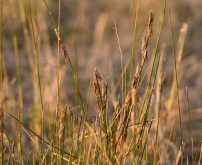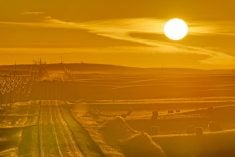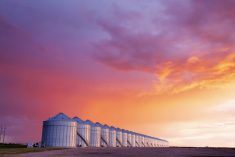In late summer I was invited to the Canadian Beef Industry Conference in Saskatoon to share my perspective on navigating drought. I would prefer covering a more cheerful topic, but as a fourth-generation Palliser Triangle dweller who resides on a ranch abandoned not once but twice by its former occupants, I’ll admit I’ve got experience with dryland life.
Of course, as I write this, I must acknowledge that within the past 24 hours, we’ve received nearly five inches of heavy rain and hail. I’m not sure if I should rejoice by listening to my winter cereals germinate, or if I will gleefully torch a tumbleweed, but our municipal fire ban is still in effect, so I’ll be mindful of my celebrations.
In reality, farmers and ranchers everywhere are somewhere on the continuum of experiencing severe drought or being submerged in unwanted water. Every region has unique challenges, and every farm business has its goals and objectives.
Read Also

Managing through market or individual stock declines
Even the best of public-traded companies can periodically experience significant drawdowns, and a successful investor should be prepared to react — or not react — accordingly, Herman VanGenderen writes.
How you approach drought, flood or any disaster in between will depend on a lot of factors. Are you just starting out as a farmer or are you winding down your operation? What is your appetite for risk? What are your strengths? What are your short-term workarounds and what are your long-term goals? What will you do if the tough times last for six months…or six years? What will your cash flow needs be?
Ranching in a drier region, we are always somewhat expecting a drought, although the past seven years have been a longer dry spell than what we typically deal with.
Water is our major limitation, not just for forage crops and pastures, but particularly for stock water. Most of our pastures rely on dugouts for surface water, and when runoff is minimal and wind-fuelled evaporation is at its maximum, both quality and quantity plummet.
Fortunately, pumping from the water source using solar- or wind-powered pumps can dramatically extend the longevity of your water supply and help retain quality. You must check your pumps daily, but if you can extend your dugout by a few weeks, or even a few days, it’s often worth it. Trail cameras can also be useful for alerting you between checks.
If you find yourself hauling water to pastures, ensure you have adequate trough space for the herd and that one trough is low enough for calves to reach. Perhaps a big poly tank can be set up and filled to gravity-feed into troughs, to ensure a more consistent flow. Also, consider what infrastructure you may be tying up. For example, if you are hauling water with a semi, that may limit the job to one or two licensed operators and tie up equipment that could be used for other things…like hauling feed.

Test water and feed
In Saskatchewan, we are extremely fortunate to access water quality testing through our agriculture extension offices. We have a robust forage and livestock extension service that many other provinces envy, so I figure if they are willing to help, let’s capitalize on it.
Grassland and forages are the cornerstone of beef cattle production and stickhandling through drought becomes a function of managing inventories: how much grass, how much feed, and how many cattle.
Don Campbell, a well-known holistic management instructor and grazer, shared a Bud Williams quote with me: “You can never have too much money, you can never have too much grass, but you can have too many cattle.”
Those words have stuck with me. When things are uncertain, we use our yearlings as a flex herd and can retain or sell them as needed or as the season progresses.
We’ve had to expand our definition of “feed,” but in doing so, I want to emphasize that you must feed test to prevent a wreck. We’ve fed a variety of crops and byproducts and have worked with a nutritionist to help us make confident choices. Using a custom-made mineral program has helped us offset any feed or water quality concerns.

While we’ve grown some good intercrops and continue to look into novel forages, we tend to safety up and stick with tried-and-true crops for our farm such as fall rye that we can use for grazing, baling, silage or combining.
Raising a living commodity gives beef producers a different sense of responsibility and urgency. We don’t worry about bushels of grain the same way we worry about meeting the needs of our herd. That accountability can fuel innovation, resourcefulness and empathy and can bring out the best in people when you need it most.
The relationships we forged and maintained through some of our hardest times, and the people who shared an encouraging word or idea, something we try to pay forward, have been a blessing.
When the wind stops blowing and the dust settles, it’s not government programs or feed or even five inches of rain that will pull you through tough times, it is people.















